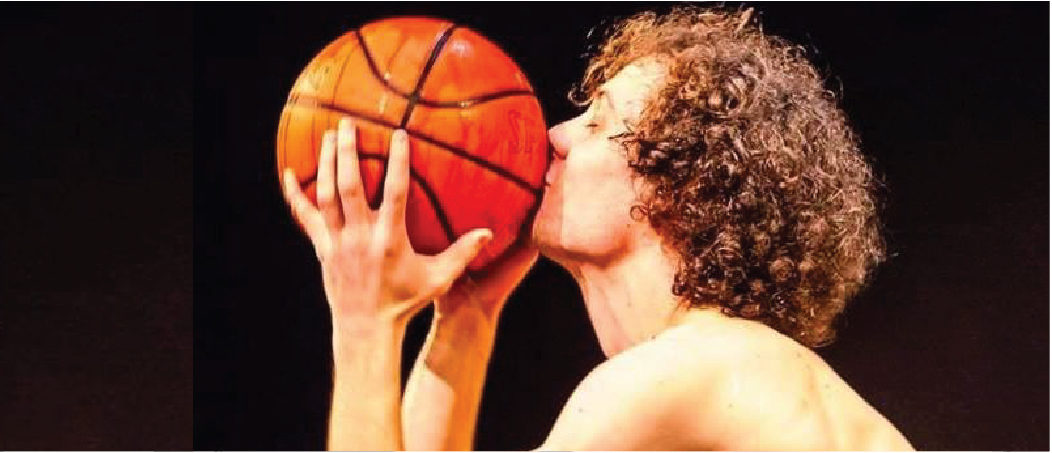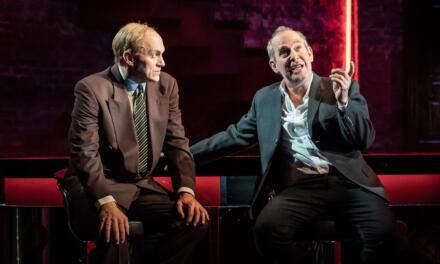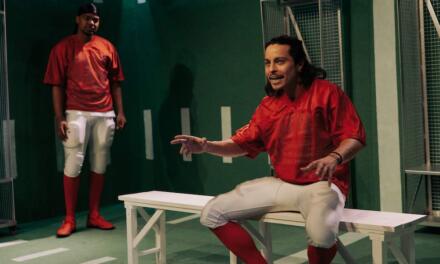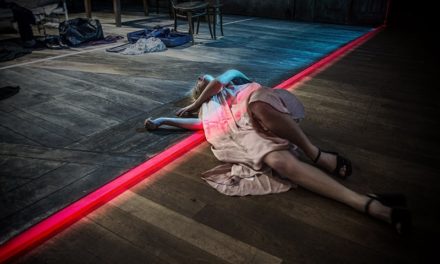Some dramatists create love letters to the things they admire. …like nobody’s watching doesn’t give the audience a love letter but an unhealthy delusion to the Tom Hanks classic Cast Away, and to castaway movies in general. This Robinsonade solo show by Jake Simonds is a cerebral production about the nature of loneliness.
The play opens with the bearded, curly-haired, scantily clad Simonds trying to start a fire the same way Tom Hanks does it in Cast Away. After toiling fruitlessly, his basketball begins talking to him. Pretty soon, the pair strikes up a conversation about Cast Away. This play isn’t just a conscious Cast Away remake though, but a serious meditation upon the film. After the opening scene, Simonds addresses the audience directly as he discusses why Tom Hanks spends half of Cast Away off the desert island and in society, but that nobody ever seems to remember that, or care. This soliloquizing about the movie goes on for almost fifteen minutes, as he meticulously recreates the famous “rain scene” from the end of the film, in which Tom Hanks’s character and his wife, now remarried, share one final kiss.
As much as …like nobody’s watching is obsessed with the genre of castaway or isolations movies, liberally quoting Gravity, Home Alone, and The Martian, this production seeks to answer larger questions about why we are so obsessed with those films. Essentially, why we are so obsessed with the idea of being totally alone. Simond’s answer is predictable: that instead of seven continents the world is made of seven billion individualized ones, so he says. We like films about loneliness because we often are lonely. The high point of …like nobody’s watching is the way in which it shows us how difficult it can be when feeling alone.
The play stays true to Simond’s obsession with isolation movies, and most of the play is told through Simond’s character recreating movie scenes with his basketball Spalding. Simond’s crafts a character that can only communicate through the movies. Eventually, Simond’s gets off his personal island, and the play ends with a montage on the projector screen of scenes from famous castaway movies, most of them already referenced in the play. And of course, Cast Away takes center stage, and the last thing the audience sees is Tom Hanks floating in a raft reaching out to a passing ship, as Simond’s recreates it on stage.
At the Nouvelle Scène, Studio A
This article originally appeared in Capital Critics’ Circle on June 16, 2018, and has been reposted with permission.
This post was written by the author in their personal capacity.The opinions expressed in this article are the author’s own and do not reflect the view of The Theatre Times, their staff or collaborators.
This post was written by Ryan Pepper.
The views expressed here belong to the author and do not necessarily reflect our views and opinions.


















